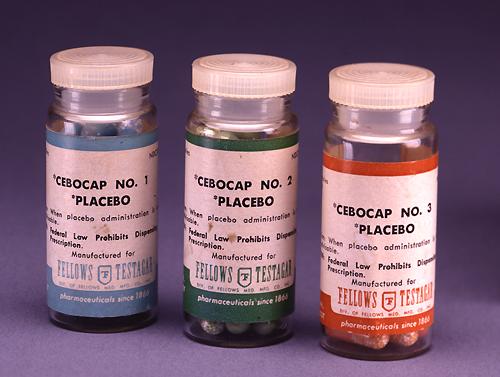According to “Plato in Twelve Volumes” published by Harvard University Press, for headaches, Plato prescribed “a certain leaf, but there was a charm to go with the remedy; and if one uttered the charm at the moment of its application, the remedy made one perfectly well; but without the charm, there was no efficacy in the leaf.”
We would now call Plato’s “charm” a placebo. Placebos have been around for thousands of years and are the most widely studied treatments in the history of medicine. Every time your doctor tells you that the drug you take has been proven to work, they mean that it has been proven to work better than a placebo.


